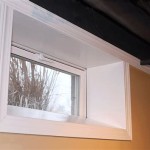Sump Pump To Remove Water From Basement: A Comprehensive Guide
Excess water in a basement can lead to a host of problems, ranging from mold growth and structural damage to the destruction of personal belongings. A critical tool in preventing and mitigating these issues is the sump pump. This device is specifically designed to remove accumulated water and prevent flooding in basements and crawl spaces. Understanding how a sump pump operates, its various types, and its proper installation and maintenance are crucial for homeowners seeking to protect their property.
The fundamental principle behind a sump pump is simple: it automatically pumps water out of a designated pit, known as a sump basin, which is typically located at the lowest point of the basement floor. This basin collects water that seeps in from the surrounding soil, drainage systems, or occasionally, plumbing leaks. When the water level in the basin reaches a predetermined point, the pump activates and discharges the water away from the foundation of the house, preventing it from accumulating and causing damage.
Understanding the Basic Components and Operation
A typical sump pump system consists of several key components. The sump basin, usually made of plastic or concrete, serves as the collection point for water. The pump itself, generally a submersible or pedestal type, sits within or above the basin. A float switch or pressure sensor is used to detect the water level and trigger the pump's operation. Finally, a discharge pipe carries the water away from the foundation, usually to a designated drainage area.
The operational cycle begins when water enters the sump basin. As the water level rises, the float switch also rises. Once the float reaches a certain level, it activates the pump. Submersible pumps are fully immersed in the water and pump it directly through the discharge pipe. Pedestal pumps, on the other hand, have their motor located above the water level and use a pipe extension to siphon the water from the basin. After the water level is lowered below the activation point, the float switch deactivates, and the pump shuts off until the water level rises again.
Pressure sensors work on a similar principle but instead of a float, they detect the hydrostatic pressure exerted by the water column. When the pressure reaches a specific threshold, indicating a sufficient water level, the pump is activated. Pressure sensors are often considered more reliable than float switches as they are less prone to mechanical failure.
The discharge pipe commonly runs horizontally through the basement wall and then slopes downward away from the foundation. The point of discharge should be carefully selected to prevent the water from simply flowing back towards the house. Ideally, the water should be directed to a storm drain, a well-drained area in the yard, or a dry well.
Types of Sump Pumps and Their Applications
There are two primary types of sump pumps: submersible pumps and pedestal pumps. Each type has its own advantages and disadvantages, making them suitable for different applications.
Submersible pumps are designed to be fully immersed in the water inside the sump basin. This design has several advantages. Submersible pumps are generally quieter than pedestal pumps because the water muffles the sound of the motor. They also tend to be more effective at pumping out water completely, leaving less residual water in the basin. Additionally, because they are submerged, they take up less space above the basin, making them a good choice for basements with limited headroom. Submersible pumps typically have a longer lifespan than pedestal pumps due to their more robust construction and cooling properties of being submerged.
Pedestal pumps, on the other hand, have their motor mounted on a pedestal above the sump basin. The motor is connected to a pipe that extends down into the basin to draw water. The primary advantage of pedestal pumps is their accessibility. The motor is easily accessible for maintenance and repairs without having to remove the entire pump from the basin. They are also generally less expensive than submersible pumps. However, pedestal pumps are typically louder than submersible pumps, and they can be less effective at pumping out water completely. They also tend to have a shorter lifespan because the motor is more exposed to moisture and is not cooled as effectively.
In addition to these two main types, there are also battery backup sump pumps. These pumps are designed to provide emergency pumping power during a power outage, which is a common cause of sump pump failure during heavy rainstorms. Battery backup pumps are typically installed alongside a primary sump pump and are powered by a marine-grade battery. When the power goes out, the battery backup pump automatically kicks in and continues to pump water out of the basement. Battery backup pumps are an essential safeguard for homeowners who live in areas prone to power outages or heavy rainfall.
Another consideration when selecting a sump pump is the pump’s horsepower. Sump pumps are typically rated from 1/4 horsepower to 1 horsepower. The appropriate horsepower for a given application depends on several factors, including the amount of water that needs to be pumped, the height that the water needs to be lifted (the head), and the length of the discharge pipe. For most residential applications, a 1/3 horsepower sump pump is sufficient. However, in areas with high water tables or frequent heavy rainfall, a more powerful pump may be necessary.
Installation, Maintenance, and Troubleshooting
Proper installation and regular maintenance are critical for ensuring the reliable operation and longevity of a sump pump. Incorrect installation can lead to premature failure, while neglecting maintenance can result in clogs, malfunctions, and reduced pumping efficiency.
The installation process typically begins with preparing the sump basin. The basin should be large enough to accommodate the pump and allow for proper float switch operation. The basin should also be level and stable to prevent the pump from tipping over or vibrating excessively. The discharge pipe should be properly connected to the pump and sloped downward away from the foundation.
For submersible pumps, it is important to ensure that the pump is properly positioned within the basin. The pump should be placed on a solid surface to prevent it from sinking into sediment at the bottom of the basin. The float switch should be free to move without obstruction, and the power cord should be routed safely to avoid entanglement. For pedestal pumps, the motor should be positioned high enough to avoid contact with water.
Regular maintenance should include inspecting the sump pump for clogs and debris. The intake screen should be cleaned periodically to prevent it from becoming blocked with sediment. The float switch should be tested to ensure that it is operating properly. The discharge pipe should be inspected for cracks or leaks. It is also recommended to periodically test the pump by manually filling the sump basin with water to ensure that it activates and pumps out the water effectively.
One common troubleshooting issue is a sump pump that runs constantly. This can be caused by a variety of factors, including a stuck float switch, a clogged intake screen, or a backflow of water from the discharge pipe. If the float switch is stuck, it can be freed by gently cleaning it and ensuring that it is not obstructed. If the intake screen is clogged, it should be cleaned thoroughly. If there is backflow of water from the discharge pipe, a check valve should be installed to prevent the water from flowing back into the sump basin.
Another common problem is a sump pump that fails to turn on. This can be caused by a tripped circuit breaker, a faulty power cord, or a malfunctioning pump motor. If the circuit breaker has tripped, it should be reset. If the power cord is damaged, it should be replaced. If the pump motor is malfunctioning, the pump may need to be repaired or replaced.
In areas with hard water, mineral deposits can accumulate on the sump pump and its components, reducing its efficiency and lifespan. To prevent this, consider using a sump pump cleaner or descaler periodically. These products can help dissolve mineral deposits and keep the pump operating smoothly.
Homeowners should also be aware of the limitations of sump pumps. Sump pumps are designed to handle moderate amounts of water. In cases of severe flooding, a sump pump alone may not be sufficient to prevent water damage. In these situations, it may be necessary to supplement the sump pump with other flood control measures, such as installing a French drain or improving the grading around the foundation.
Finally, it is crucial to have a backup plan in place in case the sump pump fails. This may include purchasing a battery backup sump pump, having a portable generator on hand, or having a professional plumbing service on call. By taking these precautions, homeowners can minimize the risk of water damage and protect their property from flooding.

Buying A Home With Sump Pump 10 Things You Need To Know

What S A Sump Pump And How Does It Help With Flooding

What Is A Sump Pump How Do Pumps Work Expert Advice

What Is A Sump Pump Green House Plumbing

How Does A Sump Pump Work Woodard

Why Do You Need A Sump Pump Everdry Toledo Ohio Michigan

Sump Pump In Your Basement Best Tips For Homeowners

How Sump Pumps Can Help You Remove Water From Flooded Spaces Think

What To Do When Sump Pump Failure Leads Basement Flooding

3 Reasons To Hire A Waterproofer And Not Plumber For Sump Pump Repair News Events Basement Systems Inc
Related Posts







